An African Safari on the Endless Savanna | Lake Manyara, Serengeti and Ngorongoro in Tanzania
It took us almost an entire day to get to Arusha, Tanzania from Victoria Falls, Zimbabwe due to patchy airline connections in Africa. After zigzagging through airports at Nairobi, Dar es Salaam and Zanzibar, we had to take an hour-long cab ride from Kilimanjaro airport to our overnight B&B in Arusha. But we waste no time and the next morning we are off to our second safari (our first African Safari was in December of 2021) across Lake Manyara National Park, Serengeti National Park and Ngorongoro Crater with our old friends John and Miko who were our driver and cook on our first trip also.
Here is a map showing our African Safari route in Tanzania.
Kilimanjaro and Arusha
July 4 - 5, 2023
Contrary to its fame in popular culture, technically there is no single Mt. Kilimanjaro that is the highest peak in Africa. Mt. Kilimanjaro consists of three volcanic mountains: Kibo, Mawenzi and Shira.
Kibo's summit is the 19,341 feet Uhuru Peak which is actually the highest peak in Africa. Uhuru is also the peak often referred to as "Everyman’s Everest" because it is the easiest to climb among the "Seven Summits" (one per continent) of the world. "Climbing Kilimanjaro" usually is a reference to climbing Kibo to reach the Uhuru summit.
The summit of Mawenzi is Point Hans Meyer (16,893 feet).
Shira has a heavily eroded ridge whose highest point is the Johnsell Point at just about 13,000 feet. Interestingly, La Paz in the Andes altiplano, the administrative capital city of Bolivia in South America, is at a higher altitude than Johnsell Point.
As our airplane commences descent into Kilimanjaro International Airport, we catch a glimpse of Kibo and Mawenzi sticking their peaks up above the clouds.
 |
| Kibo (left) and Mawenzi, Mt. Kilimanjaro from airplane approaching Kilimanjaro Intl. Airport |
Kilimanjaro International Airport (JRO) is a small cosy affair. It is so close to the tiny Arusha Municipal Airport that in 2013 the pilots of an Ethiopian Airlines Boeing 767 from Addis Ababa erroneously touched down at Arusha and ran out of runway. I don't believe anyone was seriously injured.
 |
| Kilimanjaro International Airport (JRO) |
Exiting the airport, we hire a cab to take us to our B&B in Arusha. The driver Mohammad is super friendly and we chat our way across the hour-long 35-mile drive west on the newer A23/Himo Rd Chinese highway. I take this opportunity to sign Mohammad up for our ride back to Kilimanjaro five days later after our safari.
 |
| Intersection of Mwembetanga Street & Mwembeladu Street, Murieth, Sokoni, Arusha |
We try to avoid big-brand hotel chains as much as we can. The B&B we booked - Home Villa - is reached by an unpaved road in the still-developing Murieth neighborhood off Mwembetanga Street & Mwembeladu Street in Sokoni suburb just 15 minutes south from downtown Arusha.
 |
| Relaxing around a campfire at Home Villa, Arusha |
 |
| From left: Hillary, Neema, our Safari driver John, Vagabond-2, Michael, Vagabond-1 |
Watch: Arusha - gateway to African Safari & Serengeti

Entrance to the premises of Bobby Tours

Lake Manyara: the Loveliest Lake in Africa
July 5, 2023
Lake Manyara is about 133 miles from Arusha. We get on highway A104 heading towards Makuyuni. We are in rural Tanzania soon where we start to see Maasai herdsmen with their cattle.
 |
| Maasai herdsmen |
We reach Makuyuni and stop for coffee at the TotalEnergies gas station at the intersection with highway B144. There is also an Engen petrol station across the road.
It is hard to resist beautiful handmade bracelets the Maasai women are selling here!
 |
| Hand-made Maasai bracelets |



 |
| Hippos |
 |
| Baboons |
 |
| African Hawk-Eagle |
 |
| Von der Decken's hornbill |
 |
| Giraffe |
 |
| Hawk |
 |
| Monkeys |
 |
| Impala |
 |
| African Fish Eagle |
 |
| Warthogs |
 |
| Dik-Dik |

 |
| Secretary birds |
It is not long till sunset. We catch another troop of baboons as we exit Lake Manyara National Park.
 |
| Baboons |
Panorama Safari Camp
 |
| Lake Manyara from Panorama Safari Camp |
 |
| Panorama Safari Camp |
Watch: Jambo Bwana live acrobatic dance performance
Panorama Safari Camp, Mto Wa Mbu
Serengeti National Park via Ngorongoro Crater Viewpoint, Olduvai Gorge Museum and Chief Nadotu's Maasai Village
July 6, 2023
 |
| Panorama Safari Camp |
 |
| Loduare Gate, Ngorongoro |
Ngorongoro Crater Viewpoint
 |
| Ngorongoro Crater Viewpoint: The crater is obscured by clouds below us |


 |
| Ngorongoro Crater Highlands |
Our Village of the Maasai and Chief Nadotu
The Cradle of Humankind: Olduvai Gorge
 |
| Olduvai Gorge Monument Sculptures of skulls of Paranthropus boisei / Zinjanthropus (left) and Homo habilis |
 |
| Artist's rendition of Mitochondrial Eve, mother of all humans today. Image: Procy/Shutterstock |
 | |
|
 |
| View of Olduvai Gorge By Kufundisha - Own work, CC BY-SA 4.0, Link |
Serengeti National Park
 |
| A safari trail going around a kopje |
 |
| Zebras and Thomson's gazelles |
 |
| Thomson's gazelles and African ostriches |
 |
| Tawny eagle |
 |
| Lion and lioness |
 |
| Wetland (Riverine forest) |
 |
| Hippopotamus |
 |
| Crocodiles |
Watch: Wild Giraffes of the Serengeti
 |
| Giraffes |
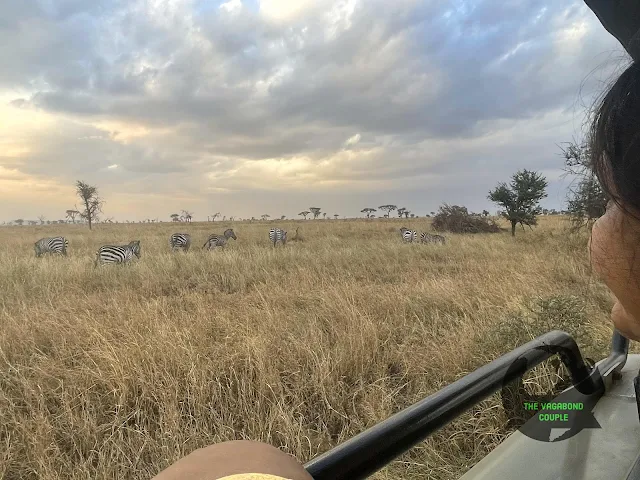 |
| Zebras |
 |
| Tent at Seronera Campsite |
 |
| Camping under the night sky of Serengeti |
Daytime Game Drives at Serengeti National Park and Night Camping at Top of Ngorongoro Crater Rim
July 7, 2023
Endless Plains
 |
| Serengeti Sunrise |
 |
| Buffalo |
 |
| Topi |
 |
| Lion cubs |
 |
| Lioness |
 |
| Lion cubs watching Thomson's gazelles |
 |
| Lioness and cub |
 |
| Marabou stork |
 |
| Lion cubs |
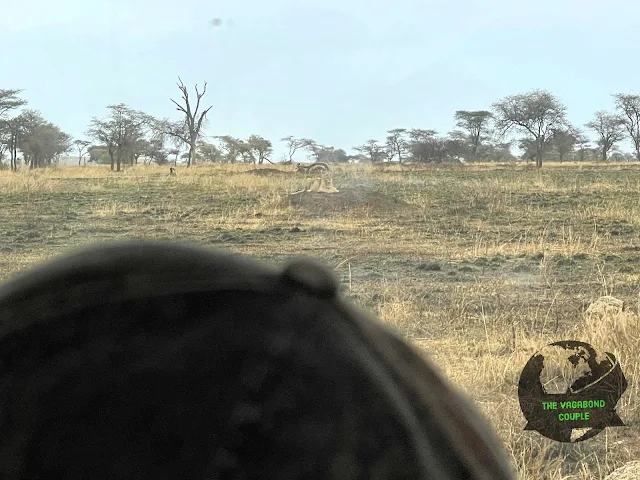 |
| Lioness |
 |
| Impala |
 |
| Zebra and Topi |
 |
| Wildebeest |

 |
| Hippopotamuses at Hippo Pool, Serengeti |
 |
| Lions |
 |
| Baboons |
 |
| Team Serengeti |
 |
| Serengeti National Park - Exit gate |
 |
| Hildebrandt’s Starlings |
 |
| Four giraffes |
 |
| Two more giraffes |
Simba Campsite, Ngorongoro
 |
| Simba Campsite A |
 |
| Zebras next to tent at Ngorongoro Simba Campsite |
A Safari at Ngorongoro Crater
The Big Five and Much More
July 8, 2023
Watch: The Lions of Ngorongoro
 |
| Ngorongoro Crater Floor (elev. 5,900 feet) viewed from trail from the Crater Rim (elev. 7,900 feet) |
 |
| The road down from rim to floor of Ngorongoro Crater |
 |
| African Elephant |

 |
| Lions |
 |
| Warthog |
 |
| Elephant |
 |
| Elephants and Buffaloes |
 |
| African Rhino (Rhinoceros) |

 |
| Lions |
 |
| Kori bustard |
 |
| African Ostriches |
 |
| Impalas |

 |
| Ngoitokitok Picnic Area |
 |
| Ngorongoro Exit Gate |
Back at Arusha
On to Zanzibar!
July 9, 2023
 |
| Mt. Meru |
 |
| Mt. Kilimanjaro: Kibo and Mawenzi from air |


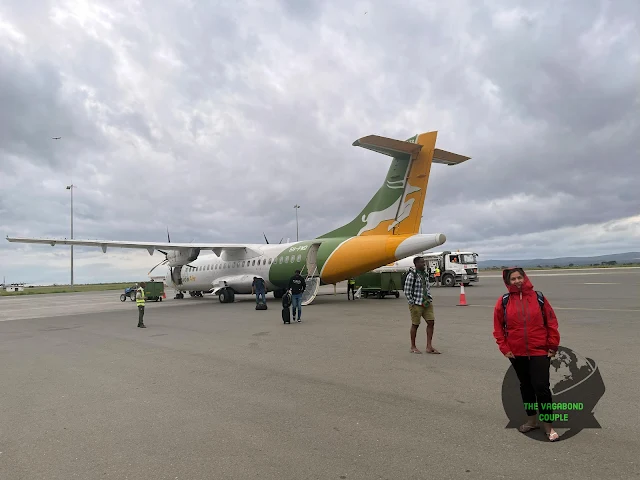


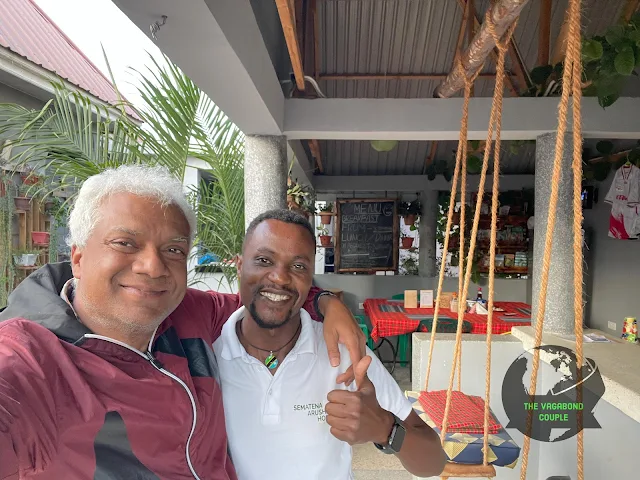

















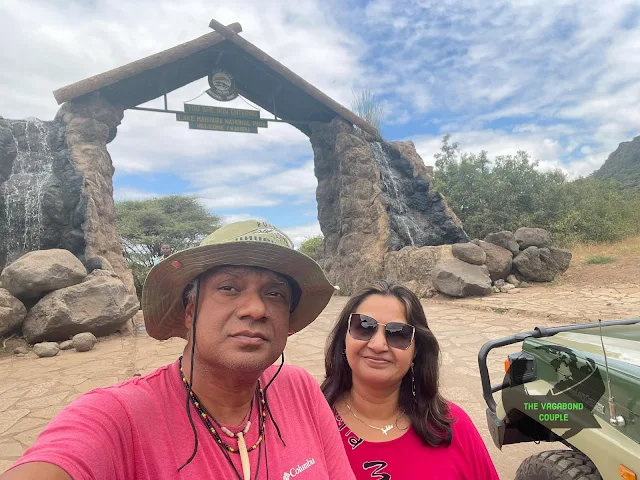



































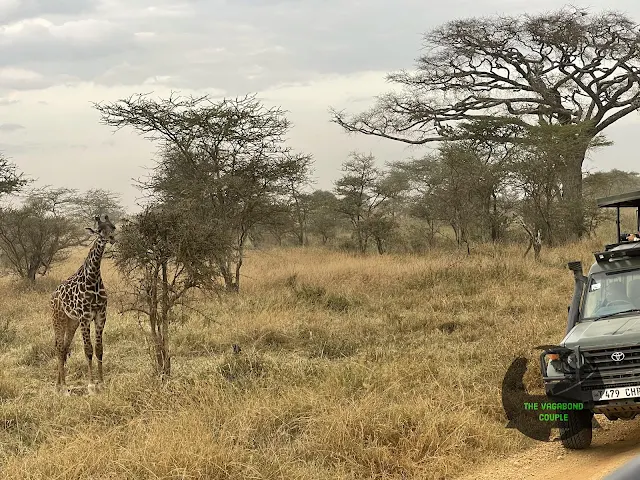

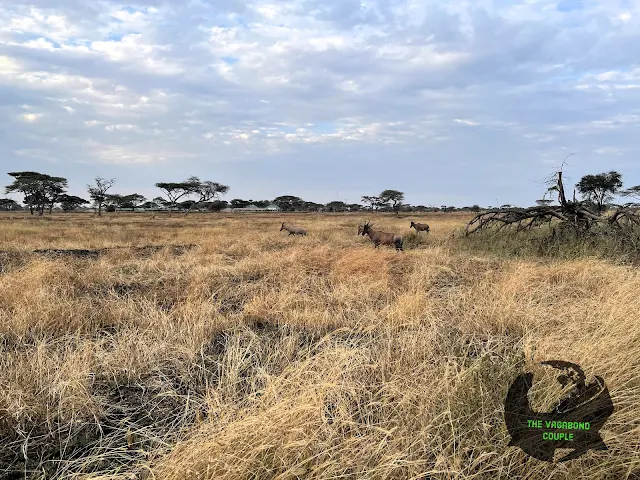





















0 comments